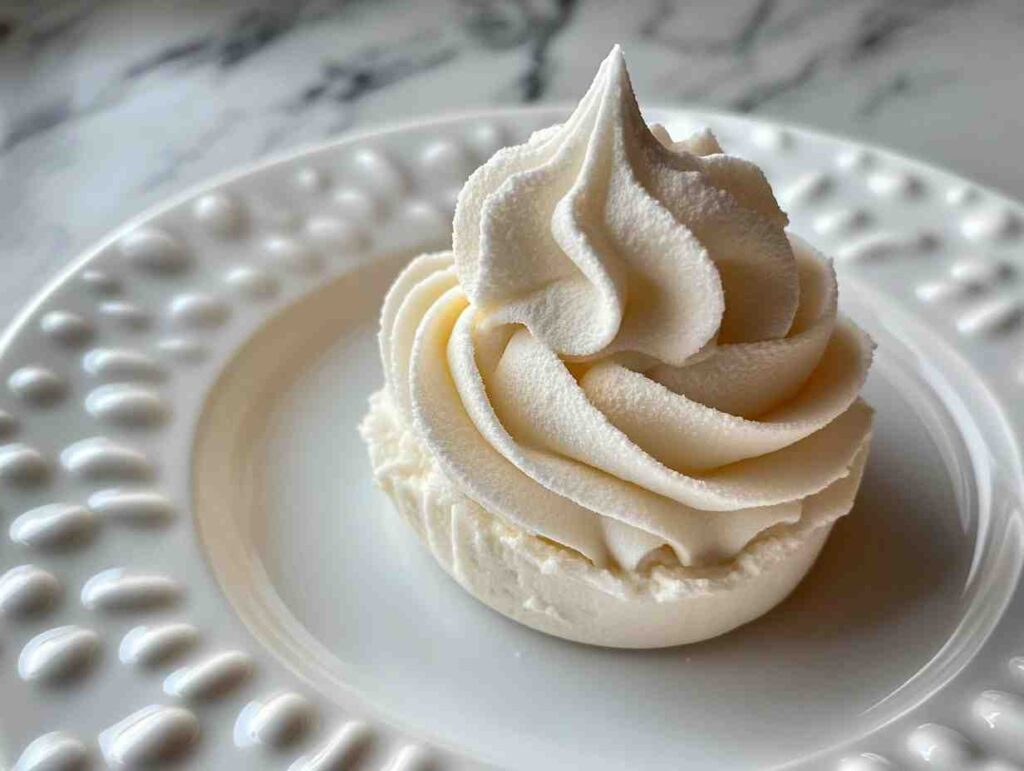Many people wonder, is custard the same as Bavarian cream? These two delightful desserts share a creamy texture, but they differ in their preparation, ingredients, and ultimately, their final character. Custard, a classic cooked mixture, and Bavarian cream, a lighter, gelatin-set creation, each offer unique culinary experiences. Therefore, understanding their differences is key to appreciating both. This article will delve into these differences in detail. We’ll explore their characteristics, ingredients, and uses. We’ll answer the question directly, and provide clarity on these popular desserts.
Understanding Custard: A Classic Dessert Base

Custard is a fundamental dessert in many cuisines. It is a cooked mixture of milk or cream, eggs, and sugar. These simple ingredients create a rich, smooth base. Often, custard also includes flavorings like vanilla or lemon zest. The cooking process is crucial, as it thickens the mixture through the coagulation of egg proteins. It is important to note the cooking temperature and time. Custard can be baked, or cooked on the stovetop. Different methods produce varying consistencies. For instance, baked custard often has a firmer texture. Stovetop custard, or crème anglaise, is typically lighter and more pourable. Consequently, there are diverse applications for custard in the culinary world.
Key Components and Preparation of Custard
The primary ingredients in custard are fairly simple. They are milk or cream, eggs or yolks, and sugar. Moreover, flavoring agents like vanilla extract are frequently added. The technique of cooking custard is just as important as the ingredients. Custard must be heated gently and carefully, therefore avoiding curdling of the eggs. Overheating can cause the mixture to become grainy. In addition, stirring is necessary to ensure even cooking and a smooth texture. For example, a classic crème brûlée is a baked custard. It has a smooth, creamy interior. It is topped with a hard, brittle layer of caramelized sugar. Therefore, proper preparation is the secret to great custard.
Decoding Bavarian Cream: A Gelatin-Set Delight

Bavarian cream, unlike custard, relies on gelatin for its structure. It also uses a rich custard base. However, the addition of gelatin transforms it into a light, creamy, and set dessert. Bavarian cream often involves whipped cream to achieve a light and airy texture. Consequently, it is different from the denser custard. The process typically involves making a custard base first. Then, gelatin is added, followed by folding in whipped cream. This creates a dessert that is both rich and remarkably airy. In comparison to custard, it has a less dense consistency and is usually served chilled.
The Key Differences in Bavarian Cream’s Creation
The inclusion of gelatin is the main differentiating factor of Bavarian cream. Gelatin provides the necessary setting property, which custard lacks. In addition, the use of whipped cream makes it lighter than a regular custard. It’s a common addition, adding airiness and smoothness. Therefore, this results in a very different texture and mouthfeel. Bavarian cream often requires setting in a mold or a serving dish. This allows it to hold its shape properly. As an example, Bavarian cream can be used in trifles or charlottes. It provides a light and creamy contrast to the other layers. Hence, the preparation process greatly influences the final characteristics.
Custard vs. Bavarian Cream: A Side-by-Side Comparison
Now, let’s examine custard and Bavarian cream side by side. It will highlight their key differences. Custard is cooked, relying on eggs to thicken it. Bavarian cream is set with gelatin. Therefore, there’s a clear distinction in how they achieve their final consistency. Custard, depending on how it’s made, can be thick or pourable. On the other hand, Bavarian cream is always a set dessert. It usually has a light and airy consistency due to the added whipped cream. This is the main reason why they are not the same. Therefore, the two desserts cater to different textural preferences.
Texture and Taste: Key Distinctions
The difference in texture is perhaps the most notable difference between custard and Bavarian cream. Custard, while creamy, is denser than Bavarian cream. It can range from a thick spoonable consistency, like pastry cream, to a lighter pourable consistency, like crème anglaise. Bavarian cream, however, is always light and airy, with a characteristic smoothness thanks to the gelatin. Furthermore, the flavors are typically very similar. The core flavor profiles are driven by the base ingredients. The addition of vanilla, chocolate, or fruits will change the taste. However, both are versatile dessert bases. In conclusion, the texture and taste differences are a key distinction between the two.
Uses and Applications of Custard and Bavarian Cream
The difference in texture and preparation dictates how these desserts are used. Custard can be used as a filling for pastries and pies, or as a sauce for other desserts. The variations, like pastry cream, are essential for eclair and tarts. Crème anglaise is also a classic partner to fruit tarts and chocolate desserts. Bavarian cream, given its gelatin setting properties, works well as a component in layered desserts, such as trifles and cakes. It can also be molded or used as a standalone dessert served chilled. This contrast allows for a diverse range of desserts. Therefore, their application is greatly influenced by their individual characteristics.
The Nutritional Profile of These Creamy Desserts
Understanding the nutritional profiles is important. Both custard and Bavarian cream, while delicious, are often high in calories and fat. Custard, due to its egg and cream content, is rich in protein and fat. However, Bavarian cream uses whipped cream, making it also high in fat. The sugar content contributes to the calorie count of both desserts. Therefore, it’s crucial to consume these treats in moderation. This table will provide a general overview.
| Nutrient | Custard (1 cup) | Bavarian Cream (1 cup) |
| Calories | 300-400 | 350-450 |
| Total Fat (g) | 20-30 | 25-35 |
| Saturated Fat (g) | 10-20 | 15-25 |
| Cholesterol (mg) | 200-300 | 150-250 |
| Sodium (mg) | 100-150 | 80-120 |
| Total Carbohydrate (g) | 25-35 | 20-30 |
| Sugar (g) | 20-30 | 15-25 |
| Protein (g) | 8-12 | 6-10 |
Note: These values are estimates and can vary based on specific recipes and ingredients. Adding more sugar or cream will increase the calories and fat content.
Frequently Asked Questions about Custard and Bavarian Cream
Let’s address some of the common questions about these desserts. These will help clarify any confusion. Custard and Bavarian cream are similar in some aspects. However, they’re quite different in others.
What’s the difference between custard and Bavarian cream?
The main difference lies in their setting agents and textures. Custard is thickened by eggs and cooked, while Bavarian cream is set with gelatin. Custard can be either thick or pourable. However, Bavarian cream is always set and light, thanks to whipped cream and gelatin. These fundamental differences make them distinct culinary creations. Therefore, it is inaccurate to say that custard and Bavarian cream are the same.
What is Bavarian cream similar to?
Bavarian cream is most similar to a mousse. Both are light, airy, and set desserts. The addition of whipped cream in Bavarian cream lends to a similar texture. Both rely on a setting agent, like gelatin. In addition, some versions of Bavarian cream may be comparable to a very light panna cotta. They share a similar creamy texture. However, panna cotta does not contain eggs. Therefore, they are not identical, but there are definite similarities.
Are custard and Boston cream the same?
No, custard and Boston cream are not the same thing. Boston cream refers to a specific flavor pairing. This often involves a cake or donut filled with custard. Then it’s topped with chocolate ganache. The “cream” in Boston cream is actually a custard. The whole thing is a complete dessert or pastry. Therefore, it is just a specific dessert and not a generic custard.
What is another name for Bavarian cream donut?
A Bavarian cream donut is often referred to as a “cream-filled donut.” However, the term “Bavarian” indicates a cream filling, which has a distinct light and airy texture. It can also be called a Bavarian cream filled donut, particularly if the bakery emphasizes its traditional European roots. The specific type of filling is the key. Therefore, the terms may be used interchangeably, but “Bavarian” specifies a particular cream.
Conclusion: Are They The Same?
So, is custard the same as Bavarian cream? The answer is unequivocally no. While they both share a creamy and decadent profile, they are fundamentally different. Custard relies on eggs for its thickening, while Bavarian cream uses gelatin. The addition of whipped cream gives Bavarian cream its light and airy texture. This is something that custard simply does not have. Each of these desserts has its place in the culinary world. Therefore, recognizing their unique qualities is essential. Appreciate the differences between them and enjoy them for their individual qualities.

